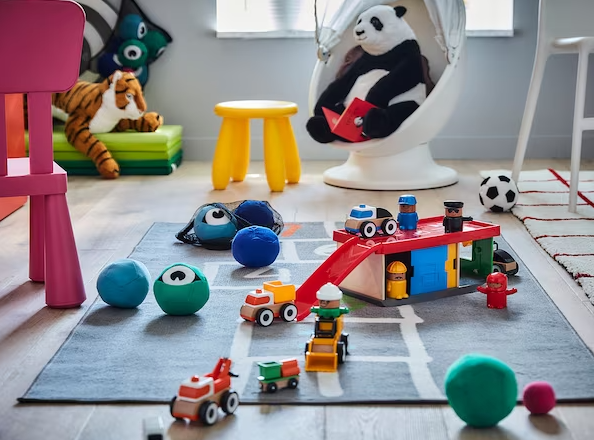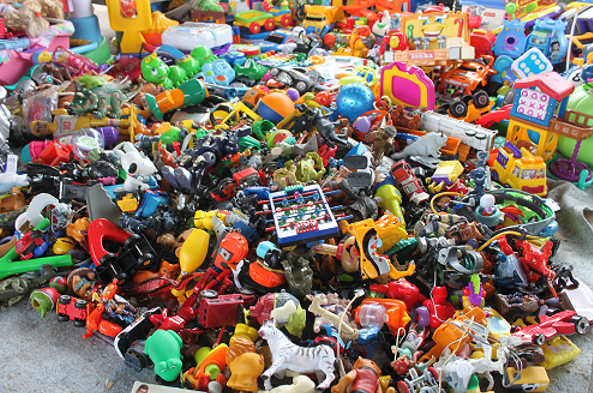
Toys serve as more than mere playthings; they are gateways to a world of imagination, learning, and unbridled childhood joy. In this article, we’ll explore the multifaceted significance of toys, their evolving nature, developmental benefits, considerations for parents, trends in the toy industry, and how these cherished objects contribute to shaping the formative years of a child.
The Essence of Toys: Beyond Play, a World Unveiled
Catalysts for Imagination:
Toys are catalysts that ignite the flames of imagination in a child’s mind. From action figures to building blocks, each toy becomes a character or element in the narratives that unfold in the expansive realm of a child’s creativity.
Learning Tools in Disguise:
Many toys are carefully crafted learning tools in disguise. Educational toys not only entertain but also impart crucial skills, from problem-solving with puzzles to developing fine motor skills with building sets.
The Evolution of Toys: From Traditional to Technological

Traditional Playthings:
Traditional toys like dolls, teddy bears, and board games hold a timeless charm. These classics continue to provide comfort and play value, emphasizing the enduring appeal of simple, tactile experiences.
Technological Marvels:
In the modern era, toys have embraced technology. From interactive robots to augmented reality games, technology-enhanced toys offer immersive experiences, blending the physical and digital worlds.
Eco-Friendly Toys:
With a growing awareness of environmental impact, eco-friendly toys made from sustainable materials are gaining popularity. These toys prioritize both the well-being of children and the health of the planet.
Developmental Benefits: Play with a Purpose
Cognitive Development:
Toys play a pivotal role in cognitive development. Puzzles, for instance, stimulate problem-solving skills, while educational games enhance memory, attention, and logical reasoning.
Emotional Well-Being:
Stuffed animals and comfort toys provide emotional support, offering a sense of security and companionship. These toys become trusted confidantes during times of stress or uncertainty.
Social Skills:
Toys facilitate social interactions. Board games, for example, encourage cooperation and communication, helping children develop essential social skills that form the foundation for future relationships.
Considerations for Parents: Choosing the Right Toys

Age-Appropriate Choices:
Select toys that align with a child’s developmental stage. Age-appropriate toys ensure that the level of complexity and safety features matches the child’s abilities and understanding.
Safety First:
Prioritize safety when choosing toys. Ensure they meet relevant safety standards, have no small, choking hazards, and are made from non-toxic materials.
Balancing Entertainment and Education:
Opt for toys that strike a balance between entertainment and education. The ideal toy engages a child’s interest while fostering learning, contributing to holistic development.
Popular Toy Trends: From Collectibles to STEAM Learning
Collectible Craze:
Collectible toys (https://leotoystore.com/collections/toys), ranging from miniature figures to trading cards, have seen a surge in popularity. These items often tap into a sense of mystery, rarity, and the joy of completing a collection.
STEAM (Science, Technology, Engineering, Arts, Mathematics) Toys:
Educational toys emphasizing STEAM subjects are on the rise. Robotics kits, coding games, and science experiment sets make learning engaging and hands-on.
Retro Resurgence:
Nostalgia-driven toys that harken back to earlier decades are making a comeback. Classic board games, retro-style action figures, and updated versions of vintage toys are regaining popularity.
Impact of Digitalization: Augmented Play Experiences
Interactive Apps and Games:
Digitalization has brought forth interactive apps and games that complement physical toys. These augmented reality experiences enhance play, providing a blend of virtual and tangible worlds.
Educational Apps:
Educational apps tailored for children offer a supplementary learning experience. These apps often use gamification to make learning engaging and enjoyable.
Screen Time Considerations:
While digital toys can be enriching, parents must consider screen time limits. Striking a balance between screen-based and traditional play is essential for a well-rounded childhood experience.
Brands Shaping the Toy Landscape: Crafting Childhood Magic
LEGO:
LEGO has been a stalwart in the toy industry, fostering creativity through building sets. Their commitment to quality and innovation has made them a beloved brand for generations.
Mattel:
Mattel, the creator of iconic brands like Barbie and Hot Wheels, continues to shape the toy landscape. Their diverse range of toys spans various interests and age groups.
